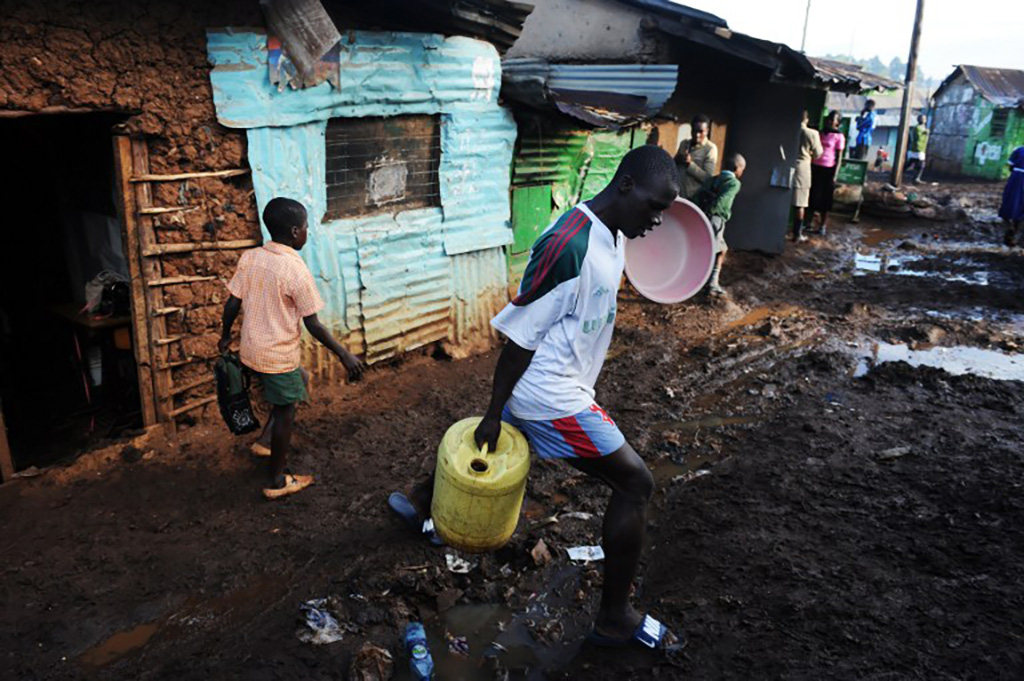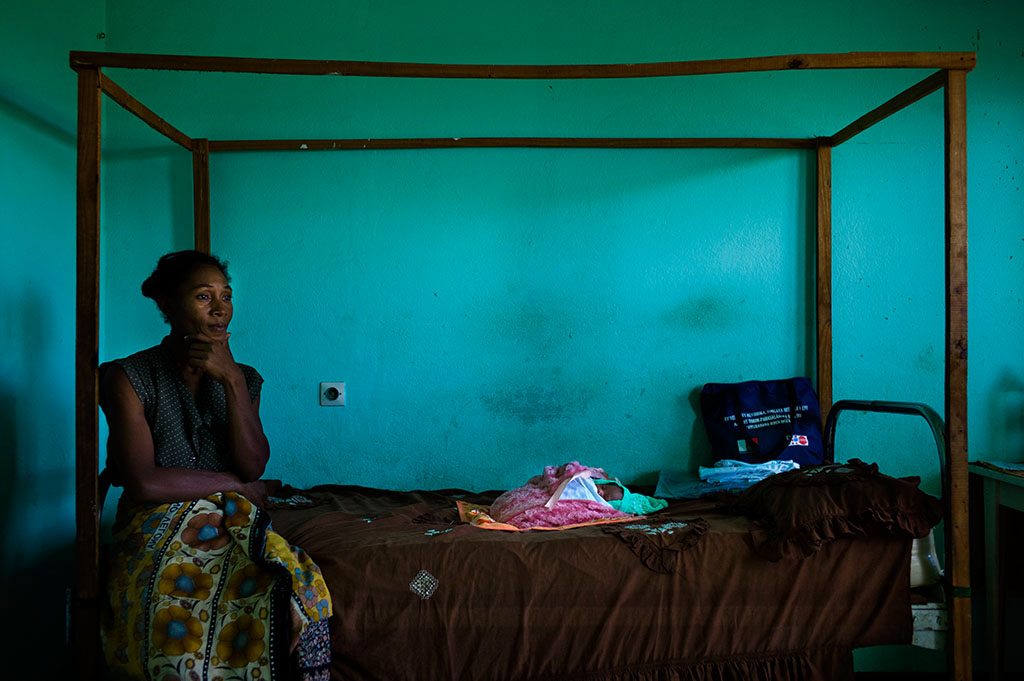Arab world lags behind in gender parity in education

Arab states are struggling to achieve gender parity in education, despite substantial gains towards achieving the related millennium development goals (MDGs). swissinfo.ch compares progress in Morocco and Yemen.
Since 1990 Morocco External linkand Yemen have reported headway on realising MDGs 2 and 3 on universal primary educationExternal link and promoting gender equalityExternal link, respectively.
At national level Morocco has pushed to achieve universal education. Net enrolment in primary schools rose from 55.3% in 1990 to 98.7% in 2013, according to the United Nations. Thanks to efforts by civil society groups, international organisations like the United Nations Children’s Fund (UNICEF)External link and the United Nations Educational, Scientific and Cultural Organization (UNESCO)External link, some people expect Morocco to achieve MDG2 when it expires in September 2015.
Despite this, some girls living in the countryside in Morocco are still unable to go to school. The main reasons for this are cultural – the preference for schooling males over females – financial and economic.
Questions have also been raised about the validity of Morocco’s MDG statistics.
“The official figures don’t necessarily reflect the reality on the ground. For example, the 98% rate of universal primary education is not the same in all areas. Figures are close to this rate near urban centres, but decline gradually as we move further away,” declared Mohammed Mu’ashib, who works as a primary school teacher and researcher in children’s culture in Morocco.
Conflicting statistics
In Yemen, meanwhile, conflicting statistics abound. United Nations data says net enrolment in Yemen’s primary schools rose from 57% in 1999 to 87% in 2012. But a recent UNICEF report on Yemen based on 2013 Ministry of Education data said the school enrolment rate was 81% – 90.3% for males and 72.8% for females. But in a different section of the same report it said the primary school enrolment rate was ‘in the range of 77.4%’.
Whatever the final approved figures when the MDGs expire, Yemen currently ranks 119th globally in terms of overall MDG achievement. It is unlikely to achieve the goal of universal primary education by 2015.
“The low ranking of Yemen on many indicators is the result of many economic, political and social factors, which have left around one million children of school age not enrolled in primary education,” said Abdo Seif, head of the United Nations Development Programme (UNDP) advisory team in Yemen.External link
Shrinking gender gap, but…
Despite differing levels of success in getting children into classrooms, both Morocco and Yemen suffer from gender inequality in education.
Morocco has been more successful. In 1990, there were about 68 girls for every 100 boys in primary school. By 2012, the gender gap had shrunk to 95 girls to 100 boys. Meanwhile in Yemen in 1999 there were about 56 girls for every 100 boys in primary school. By 2012 the gender gap was 83 girls to 100 boys. The figure for secondary school was much worse, though – 65 girls to 100 boys.
Nonetheless, Abdul-Hadi Wakrimi, the head of the Imam Malik Association for Traditional Education “Tam Turka Azrou” in the village of Onayan 380km southwest of the Moroccan capital Rabat, said fathers were afraid to send their daughters to remote schools.
“But there is also the economic factor and the low income of parents. Fathers prefer to cover the cost of education for boys and sacrifice the right of girls,” he added.
Tribal influence
But girls in rural areas in Yemen suffer more than their counterparts in Morocco, said Abdo Seif, owing to “interference from tribal chieftains and dignitaries, and because of the predominance of social traditions that reject education, in addition to the lack of resources and the poor infrastructure”.
Ishraq al-Hakimi, the Ministry of EducationExternal link undersecretary for girls’ education in Yemen, agreed that it was not just a question of poverty.
“Customs and traditions, and the lack of awareness among families about the importance of education in general, and the girls’ education in particular, make families believe that girls’ education is useless, and that the girl’s natural place is in her home where should deal with household responsibilities,” she declared.
Ishraq said there were few girls-only schools in rural areas in Yemen. The schools there were often mixed, which meant some parents deprived their daughters of an education.
But there were other obstacles, she went on: “These include the scarcity of female teachers who agree to work in the countryside, early marriage between 12 and 18 which prevents girls from completing their education, and widespread violence against women and girls.”
A recent report by the UNESCO Institute for Statistics raised concerns that the rate of enrolment of boys had declined in recent years, which meant that the figures may not reflect the real progress in girls’ education. Specialists therefore believe that Yemen will not be able to achieve gender equality in education target.
Impact of armed conflicts
While Morocco has maneuvered relatively peacefully during the Arab Spring, Yemen has been plagued by a cycle of political and civil conflict, coupled with their fight against terrorism and Al-Qaeda since 2011.
Fighting with Shi’ite Muslim Houthis in the northeast of the country, the popular uprising in the capital Sanaa and several other cities against the regime of former President Ali Abdullah Saleh, and calls for independence in the south have all had a negative impact on achieving the MDGs.
Reports by Yemen’s Ministry of Education in 2013 showed that as a result of these developments over 150 schools were occupied, including 34 by government armed forces or displaced people. About 100,000 students have been affected, according to the Ministry of Education.
Local and practical experiments
In the face of these problems, civil society organizations in Morocco and Yemen, have nonetheless managed to develop small local solutions for achieving universal education and gender equality goals.
In Morocco so-called ‘collective schools’ have been set up for boys and girls in rural areas. In the village of Onayan the ‘Imam Malik Association for Traditional Education’, for example, offers an educational programme similar to that of public schools, but under the supervision of the Ministry of Awqaf (endowments) and Islamic Affairs. The ministry oversees the traditional education and literacy programmes, which focus more on the teaching of the Holy Koran. The association has three classes that accommodate around 60 students.
The head of the association, Abdul-Hadi Wakrimi, says the experiment is successful, as each student gets a grant worth 150 dirhams (about $20) a month. However, he recognizes that they suffer from “a lack of quality education and qualified teachers”.
A successful experiment was also launched in 2003 to teach Tamazight, the language spoken by about three million people, in order to increase attention on ethnic and linguistic minorities. According to a UNESCO report, this helped reduce the rate of children who were never enrolled in schools.
And in Yemen, a civil society group called the Yemeni Coalition for Education for AllExternal link took an unprecedented step to address the issue of tribes’ opposition to girls’ education. It encouraged tribes to sign a document pledging to teach girls so they wouldn’t be blamed for the failure to achieve the MDGs. The first one was signed on February 13, 2014 with the chieftains and people of Hamadan directorate on the outskirts of Sanaa. The coalition is confident that such agreements will be expanded in the future to involve other tribes.
MDGs 2 and 3
Worldwide progress External linkon realising MDG 2 – universal primary education – and MDG 3 – promoting gender equality – has been mixed. The overall school enrolment rate in primary education in developing regions increased from 83% to 90% between 2000 and 2012. But most of the gains were achieved by 2007, after which progress stagnated. In 2012, 58 million children were out of school.
Substantial advances were made towards reaching gender parity in school enrolment at all levels of education in all developing regions. By 2012, all developing regions achieved, or were close to achieving, gender parity in primary education.
Half of the 58 million out-of-school children of primary school age live in conflict-affected areas. More than one in four children in developing regions entering primary school is likely to drop out. In the Arab-speaking world Yemen was ranked last with around 857,000 children out of school, according to a report by UNESCO in 2012, followed by Iraq (500,000), Egypt, (368,000), Saudi Arabia (318,000) and Morocco (134,000).
781 million adults and 126 million youth worldwide lack basic literacy skills, and more than 60% of them are women.

In compliance with the JTI standards
More: SWI swissinfo.ch certified by the Journalism Trust Initiative













You can find an overview of ongoing debates with our journalists here . Please join us!
If you want to start a conversation about a topic raised in this article or want to report factual errors, email us at english@swissinfo.ch.